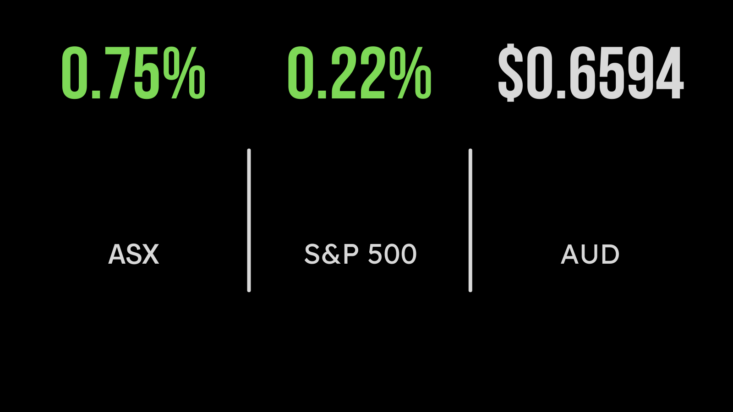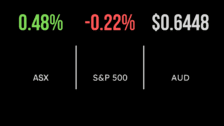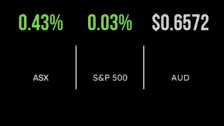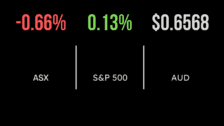The ASX rises buoyed by Australian Big Banks and Technology
The S&P/ASX 200 closed 0.8% higher on Monday aligning with a surge in US equities that propelled the S&P 500 to new record highs last week. However, gains were tempered by cautionary statements from local mining companies regarding declining commodity prices. Technology and financial sectors experienced notable gains, building on the momentum from Friday. Buy now, pay later company Zip surged by 16.5% to 74¢ after indicating a return to semi-annual profitability for the first time since 2021. Life360 increased by 4.8% to $7.40, Block added 3.1% to $101.06, and Tyro Payments rose 1.9% to $1.065. Investors also favoured consumer-related stocks, with The Star Entertainment gaining 5.1% and A2 Milk Company climbing 6.3%. Major banks saw positive movement, with ANZ rising 1.4% to $26.50, Commonwealth Bank up 1.3% to $114.80, National Australia Bank climbing 1.1% to $31.63, and Westpac advancing 1.1% to $23.45. Some investment analysts are predicting 4% annual growth in Australian banks’ net interest income until fiscal 2026, driven by higher net interest margins and loan growth. Despite potential increases in bad debts, it is anticipated cost containment measures will support overall profit growth alongside revenue.
Liontown Resources falls 21 percent for the day, 33 per cent for the week, 66 per cent over the past six months.
The materials and utilities sectors were the only ones in the red. Falling metal prices prompted warnings from mining companies, leading to declines in commodity stocks. Fortescue Metals and BHP Group saw gains of up to 0.9%, whilst Liontown’s shares plummeted more than 21% to 94¢, making it the largest index laggard. Other notable declines included Mineral Resources, down 9.6% to $52.55, Pilbara Minerals losing 4% to $3.33, South32 declining 2.8% to $3.15 after revising down its copper output guidance for fiscal 2024, and nickel explorer Chalice Mining sinking 4.7% to $1.02 due to plans to cut costs by 40% in response to weak market conditions. Lynas Rare Earths fell 1.3% to $5.87 after its December quarter output more than halved following a temporary shutdown in Malaysia. Additionally, Cooper Energy shares plunged 24% due to higher decommissioning costs estimates, and Appen collapsed by 40.2% after Google terminated a $125 million contract.
US bond yields fall, and US shares continue their ascent in anticipation of March or May rate cuts.
On Monday, the S&P 500 lifted by 0.2%, achieving a new record high following its previous all-time closing peak on Friday. Simultaneously, the Dow Jones and Nasdaq 100 set their own record highs, advancing by 0.4% and 0.1%, respectively. Notably, megacaps such as Apple (1.2%) and Nvidia (0.3%) outperformed. Macy’s experienced a 3.5% increase after rejecting a $5.8 billion proposal to privatize the retail company. SolarEdge saw a notable 3.9% jump following the announcement of a 16% reduction in its workforce. Looking ahead, the earnings season continues with companies like J&J, Netflix, Verizon, 3M, Tesla, IBM, and Intel scheduled to report. Investors will also closely monitor key economic indicators for the U.S. throughout the week, including the advance estimate for Q4 GDP growth, PCE, and S&P Global PMIs. The substantial relaxation in financial conditions is also reflected in equity valuations. Currently, the S&P 500, a prominent U.S. blue-chip index, is trading at 22 times the estimated earnings for the next 12 months. This valuation places it at a level comparable to the latter part of 2021, a period when U.S. interest rates were nearing zero.











